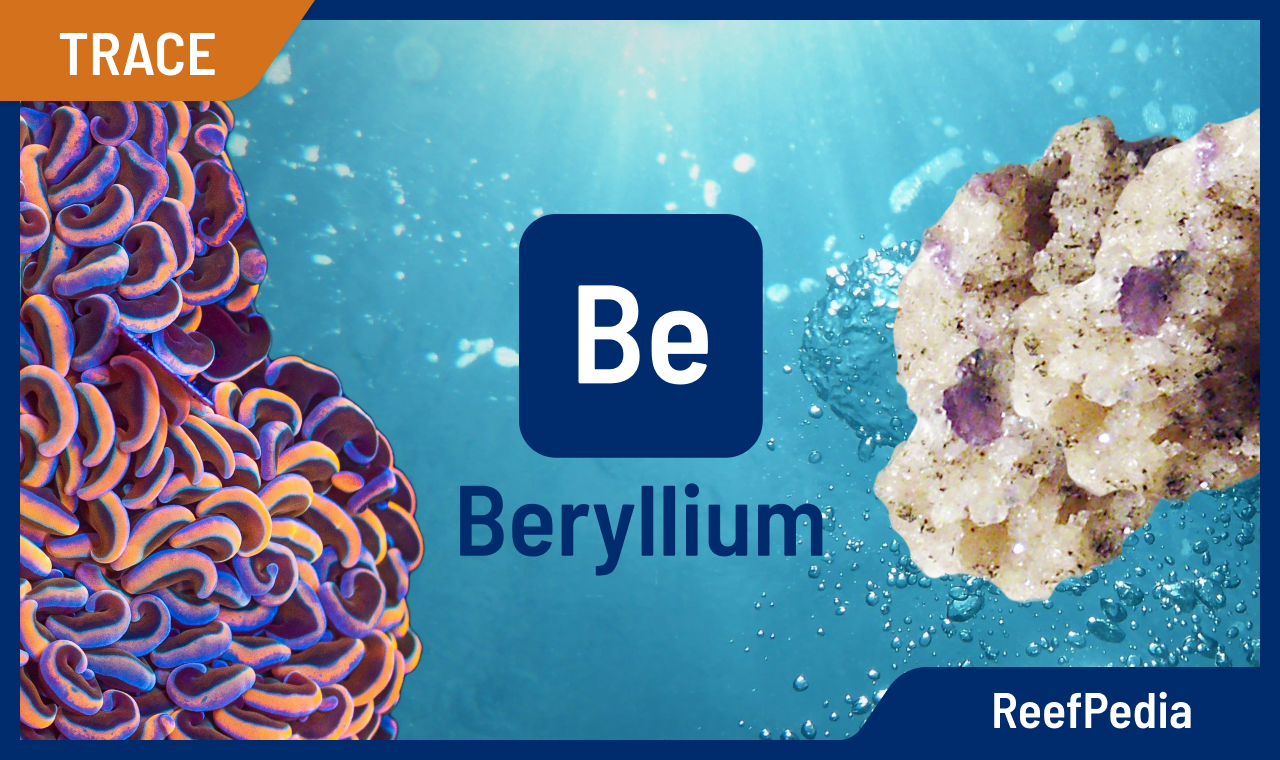What is BERYLLIUM (Be)?
Beryllium (Be, Latin: beryllium) – a chemical element from the second group of the periodic table of elements known as beryllium*. The same group of elements includes: calcium (Ca), magnesium (Mg), strontium (Sr), barium (Ba) and radium (Ra). Although these elements belong to the same group, they differ significantly in their prevalence in nature. Just as magnesium, calcium are fairly common elements, beryllium is no longer necessarily so. Its content in the Earth’s crust is small, at 0.0002%.
Beryllium occurs only in minerals, forming them in combination with other elements. It is also a component of gemstones such as aquamarine, emerald and chrysoberyl. In its free form, it is a hard, light and brittle grey metal.
In the environment, beryllium (Be) is produced mainly in the atmosphere, entering the seas and oceans in the form of precipitation. In seawater it is found in two forms, 68% of it is in solution, and the remaining 32% is in particulate matter, the vast majority of which is of biogenic origin (it is part of chemical compounds present in plant and animal organisms). Excess of this element in seawater can be removed by oxidation or with the participation of calcareous organisms, dissolving it.
Importance of beryllium in seawater
Beryllium is a non-essential element for marine aquaristics. Its concentration should be kept at non-detectable levels.
Literature reports suggest that beryllium is an inhibitor of the enzyme alkaline phosphatase; Alkaline Phosphatase (AP-ase). This enzyme catalyzes (accelerates), among other things, the hydrolysis of phosphorus monoester bonds. This enzyme is found, among others, in the cell walls of algae. The activity of this enzyme has a bearing on the rate of hydrolysis of organic phosphorus and its subsequent absorption.
Problems associated with excess or deficiency of beryllium in seawater
A low concentration of beryllium, at undetectable levels, is a parameter within the norm (0-0.1 ug/l).
Too high a beryllium value can lead to health problems in corals and other animals, or even death. The most common causes of exceeding the recommended beryllium level: contaminated salt, frozen food, contaminated supplements. Find and eliminate the cause of the problem and lower the value of this parameter in the water. Perform up to 6 water changes. It is recommended to change about 15% of the volume of aquarium water during each change until the recommended value of this parameter is reached. The water prepared for the change must be characterized by the appropriate level of target salinity. Use salts with the correct parameters and composition suitable for the ICP test.
How to protect the aquarium?
Check the beryllium content regularly and keep it at ICP undetectable level. We recommend that you maintain beryllium <0.1 μg/L, The absence of beryllium in seawater ensures the health of animals.
The most accurate and reliable method for determining beryllium is ICP-OES analysis. The Inductively Coupled Plasma Optical Emission Spectrometry (ICP-OES) technique is the most accurate analytical method for analyzing the elemental composition of seawater.
Recommendations
You should not supplement this element, in order to ensure the proper level of beryllium in the aquarium you should systematically test it and make sure that its level is correct.
If the level of beryllium exceeds 0.1 µg/l, we are talking about an overdose, higher values are toxic to corals. Too high a level of this element worsens the health of animals. The most common causes of exceeding the recommended level of beryllium: improperly prepared salt, contaminated supplements, poor quality food. Find and eliminate the cause of the problem and lower the value of this parameter in the water. Perform up to 6 water changes. It is recommended to change about 15% of the volume of aquarium water during each change until the recommended value of this parameter is reached. The water prepared for the change must be characterized by the appropriate level of target salinity. Use salts with the correct parameters and composition suitable for the ICP test.
*The name beryllium comes from the name of the first element placed at the top of the second j column of the periodic table (Be-beryllium).
Literature:
- https://www.faunamarin.de/en/knowledge-base/beryllium/
About author

Magdalena Metzler
Privately, I am a mother and a lover of nature and sport. My main interest is quantum chemistry, which hides a whole lot of unsolved mysteries and connections, which is extremely exciting from a scientific point of view.
In my scientific career, I have conducted international projects focused on innovative solutions for many branches of business, e.g. automotive, construction, and now, of course, marine aquaristics.
Working at Reef Factory gave me a passion for marine aquaristics, which I can develop every day, building a chemistry department and creating products that will help aquarists take care of tanks and ensure the highest safety of animals.
One of the most exciting memories of working at Reef Factory is the commissioning of the ICP-OES spectrometer, which analyzes the elemental composition of seawater. The method of analysis in ICP is based on an analytical technique, which is a combination of my passion for quantum chemistry and marine aquaristics.
I hope you find my articles on ReefPedia interesting and helpful! Happy reading :))
Magda

